Business
Affordable Places to Live as a Remote Worker in Lagos by Dennis Isong

Lagos is not the cheapest city to live in, but with the right information, you can find an affordable place that suits your needs as a remote worker.
If you have ever tried working remotely in Lagos without proper planning, you already know how fast your data subscription disappears.
It’s like your WiFi is fasting and praying for deliverance! And let’s not even talk about the rent—some landlords think they are renting out properties in Banana Island when, in reality, it’s more like “Plantain Village.”
Lagos is a great city for remote workers, but choosing the right area to live in can make all the difference.
You need a place that is affordable, safe, and has stable electricity and internet access. Here are some top locations that fit these criteria without draining your bank account.
1. Ogudu
Ogudu is one of the hidden gems in Lagos. It offers a mix of affordability, security, and accessibility.
The cost of renting a mini-flat (self-contained apartment) in Ogudu ranges from ₦500,000 to ₦1,200,000 per year. The roads are relatively good, and you have easy access to the Third Mainland Bridge, making it easy to get to the Island if needed. Internet service is also strong, with providers like MTN, Airtel, and Spectranet delivering good speed.
2. Abule Egba
Abule Egba has improved significantly in recent years. With the new flyover bridge and better road networks, commuting to other parts of Lagos is much easier.
The area is budget-friendly, with mini-flats going for ₦300,000 to ₦700,000 per year.
There are supermarkets, restaurants, and co-working spaces nearby if you ever need to step out of your home office. Power supply is also fairly stable compared to some other places in Lagos.
3. Gbagada
Gbagada is a sweet spot for remote workers looking for a calm environment that is still close to the business districts.
The rent is slightly higher than in Abule Egba, with mini-flats ranging from ₦700,000 to ₦1,500,000 per year. But the extra cost comes with benefits—better security, less traffic stress, and more reliable power supply. Plus, you get quick access to Ikeja, Victoria Island, and Lekki if work ever demands physical meetings.
4. Ikorodu (Some Parts)
Ikorodu is not just for people who love long-distance travel. Some areas like Agric, Ogolonto, and Ebute are fast developing, with better road networks and growing commercial activities.
You can get a decent mini-flat for ₦250,000 to ₦600,000 per year. The internet connection is not bad if you go with reliable providers. The only downside? If you need to be on the Island regularly, the commute might test your patience.
5. Oshodi-Isolo
Oshodi has changed from the chaotic reputation it had in the past. The Isolo side, in particular, is a solid choice for remote workers. Rent prices are between ₦400,000 and ₦900,000 per year for a mini-flat. There’s good access to transport, markets, and a variety of restaurants. The area is also well-connected to Ikeja and Surulere, making movement easy.
6. Mowe & Ibafo (Bordering Lagos and Ogun State) If you don’t mind living slightly outside Lagos,
Mowe and Ibafo are excellent options. They are along the Lagos-Ibadan expressway, and many professionals are moving there due to lower rent and better housing options. You can get a decent apartment for ₦200,000 to ₦500,000 per year.
The internet connection is getting better, especially with fiber-optic expansion. If you are a remote worker who values peace and space, this might be the best place for you.
Things to Consider Before Choosing a Place
• Power Supply: Lagos has unpredictable electricity, so areas with better supply should be a priority. Places like Gbagada and Ogudu tend to have more stable power. • Internet Connection: Check which provider has the best network in the area.
• Transport & Accessibility: If you need to move around frequently, consider areas with good road networks and less traffic congestion.
• Budget: Don’t just look at rent; consider other costs like service charges, security levies, and water supply.
Lagos is not the cheapest city to live in, but with the right information, you can find an affordable place that suits your needs as a remote worker.
Whether you choose Ogudu for convenience, Abule Egba for affordability, or Mowe for peace and quiet, there is a perfect spot for you.
Just remember, wherever you settle, invest in an inverter or a backup power source—because even in the best areas, NEPA will always remind you that they are in charge!
Dennis Isong and team.
+2348164741041
+2348028667565
+2348164741041
Business
Global Energy Industry adds 5 million jobs , says iea
Applied technical roles such as electricians, pipefitters, line workers, plant operators and nuclear engineers are in especially short supply.
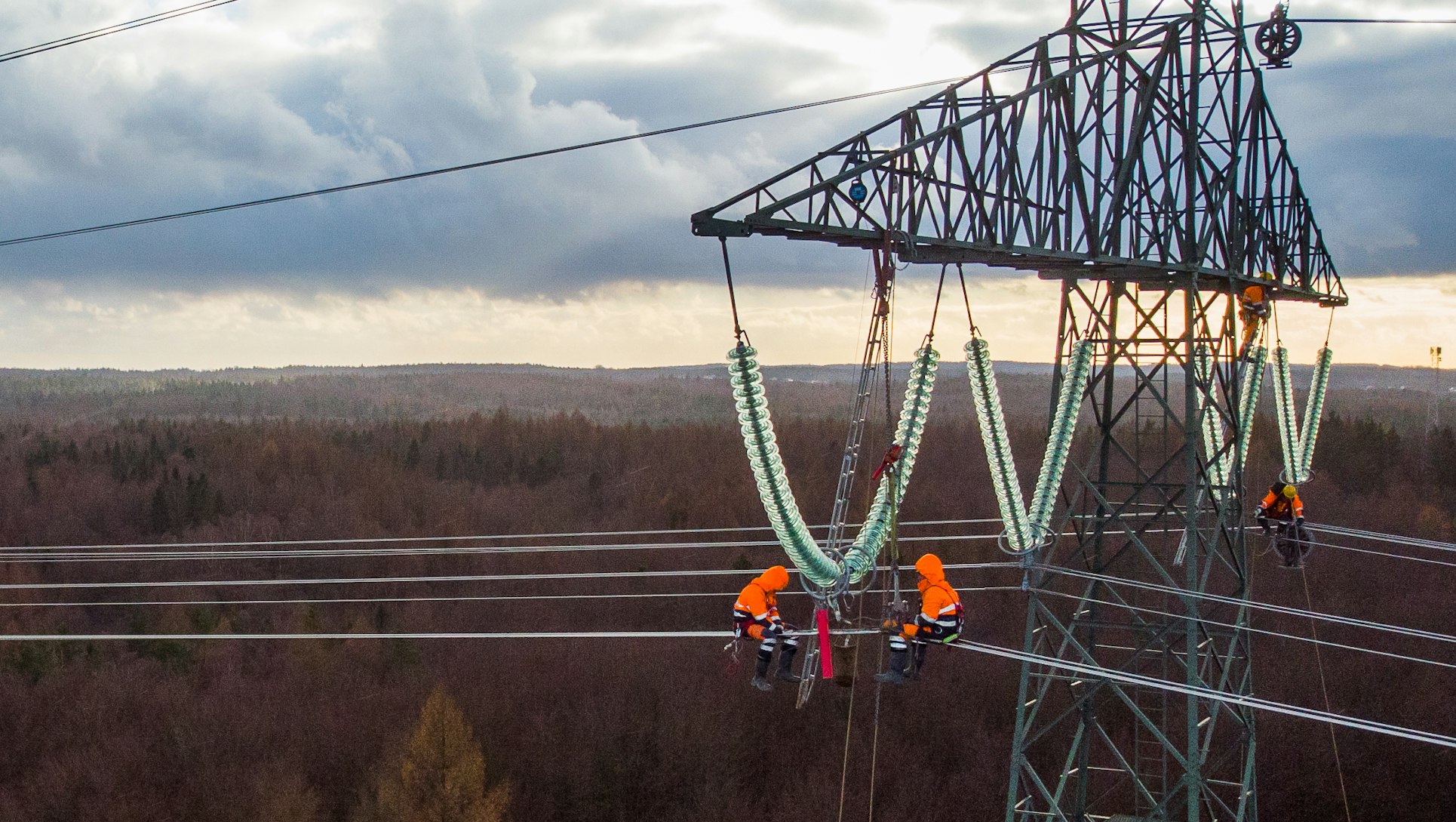
image credit : iea
The International Energy Agency says that the global energy sector created 5 million employments in the past five years (2019-2024) to reached 76 million people worldwide.
The agency, in its just released World Energy Employment 2025, however warns of deepening skilled labour shortages: “Applied technical roles such as electricians, pipefitters, line workers, plant operators and nuclear engineers are in especially short supply. “
“Out of 700 energy-related companies, unions and training institutions participating in the IEA’s Energy Employment Survey, more than half of them reported critical hiring bottlenecks that threaten to slow the building of energy infrastructure, delay projects and raise system costs,”iea said.
According to the report, the power sector is leading the way on job creation, accounting for three-quarters of recent employment growth, and is now the largest employer in energy, overtaking fuel supply.
Solar PV is a key driver of growth, complemented by rapid expansions in hiring in nuclear power, grids and storage.
Increasing electrification of other sectors of the economy is also reshaping employment trends, with jobs in EV manufacturing and batteries surging by nearly 800 000 in 2024.
Fossil fuel employment remained resilient in 2024.
Coal jobs rebounded in India, China and Indonesia, pushing employment in the coal industry 8% above its 2019 levels despite steep declines in advanced economies.
The oil and gas industry has also regained most of the jobs lost in 2020, although low prices and economic uncertainties have triggered job cuts in 2025.
Based on early data, energy employment growth is expected to moderate to 1.3% in 2025, reflecting persistently tight labour markets and heightened trade and geopolitical tensions that are making some firms more cautious about hiring.
Despite the strong recent performance of the overall energy sector, the supply of newly qualified workers is not keeping pace with the sector’s needs.
To prevent the skills gap from widening further by 2030, the number of new qualified entrants into the energy sector globally would need to rise by 40%.
The report shows that this would require an additional $2.6 billion per year of investment globally, representing less than 0.1% of spending on education worldwide.
“Energy has been one of the strongest and most consistent engines of job creation in the global economy during a period marked by significant uncertainties,” said IEA Executive Director Fatih Birol. “But this momentum cannot be taken for granted.
The world’s ability to build the energy infrastructure it needs depends on having enough skilled workers in place. Governments, industry and training institutions must come together to close the labour and skills gap. Left unaddressed, these shortages could slow progress, raise costs and weaken energy security.”
Business
Again, UBA Wins Africa’s Bank of the Year 2025
This brings its total awards this year to ten as UBA Benin, UBA Chad, UBA Republic of Congo (Congo-Brazzaville), UBA Liberia, UBA Mali, UBA Mozambique, UBA Senegal, UBA Sierra Leone, and UBA Zambia, all came out tops as the best banks in their respective countries, underscoring the bank’s strength across West, Central and Southern Africa and highlighting the depth of its Pan-African franchise.
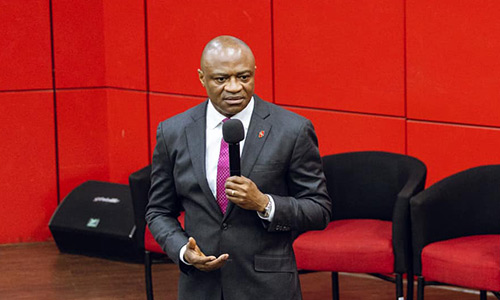
• Oliver Alawuba, GMD UBA
United Bank for Africa (UBA) Plc has been named the African Bank of the year 2025 by the Banker.com.
UBA also won the Best Bank of the Year award in nine of its 20 African subsidiaries.
This brings its total awards this year to ten as UBA Benin, UBA Chad, UBA Republic of Congo (Congo-Brazzaville), UBA Liberia, UBA Mali, UBA Mozambique, UBA Senegal, UBA Sierra Leone, and UBA Zambia, all came out tops as the best banks in their respective countries, underscoring the bank’s strength across West, Central and Southern Africa and highlighting the depth of its Pan-African franchise.
The Chief Executive Officer, UBA UK, Deji Adeyelure, received the awards on behalf of the bank, representing the Group Managing Director/CEO, Oliver Alawuba, and was accompanied by the bank’s Head Business Development, Mark Ifashe, and Head, Financial Institutions, Shilpam Jha.
The Banker’s awards are widely regarded as the most respected and rigorous in the global banking industry, celebrating institutions that demonstrate outstanding performance, innovation and strategic execution.
In its remarks on UBA’s winnings, the banker.com said, “For the third time in five years, UBA Group has won the coveted Bank of the Year award for Africa. UBA Group time after time punches above its weight against its larger African rivals. The bank this year also takes home nine separate country awards (one more than it gained for its last continental win in 2024), equivalent to around a quarter of the awards for the continent, and more than any of its continent-wide rivals.”
Business
How to Buy Land in Lagos While Living Abroad (Step-by-Step Guide) by Dennis Isong
When transferring money internationally, be aware of the regulations in both your country of residence and Nigeria.
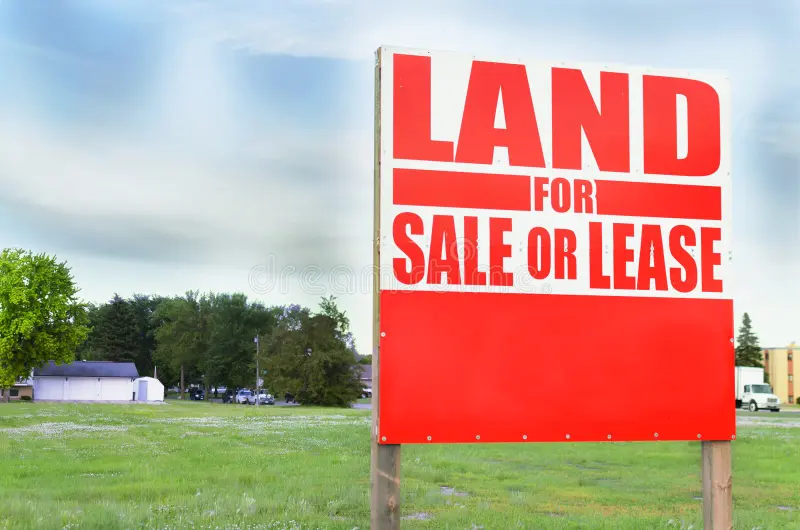
ADAEZE stared at her laptop screen in her Toronto apartment, scrolling through yet another property listing in Lagos.
She had been living in Canada for eight years, working as a nurse, and the dream of owning land back home had grown from a whisper to a roar.
Her younger sister was getting married soon, her parents were ageing, and the idea of having a solid asset in Lagos felt like planting roots even while living thousands of miles away.
But every time she got close to making a decision, fear crept in.
What if the land didn’t exist? What if the documents were fake? What if she sent her hard-earned money into a black hole?
These questions kept her awake at night, and she knew she wasn’t alone.
Thousands of Nigerians living abroad share this dream and this fear.If you’re reading this, you’re probably like Adaeze. You want to invest in Lagos real estate, but the distance makes everything feel complicated and risky.
The good news is that buying land in Lagos while living abroad is entirely possible, and with the right approach, you can do it safely and successfully.
This guide will walk you through the entire process, from research to ownership, so you can make informed decisions and avoid costly mistakes.
Understanding the Lagos Land Market from Abroad
The Lagos property market is one of the most dynamic in Africa, and it attracts investors from all over the world.
As someone living abroad, you need to understand what makes this market tick before you dive in. Lagos is not a monolithic city. It’s a sprawling metropolis with different areas offering different opportunities and challenges.
Areas like Lekki, Ikoyi, and Victoria Island are well-developed and come with premium price tags. These locations offer good infrastructure, clear documentation, and lower risk of land disputes.
On the other hand, emerging areas like Epe, Ibeju-Lekki, and Badagry offer more affordable prices but may come with infrastructure challenges and longer development timelines.
Your choice depends on your budget, investment goals, and risk tolerance.
One thing you must understand is that the Lagos land market operates differently from what you might be used to in Europe, North America, or other parts of the world.
Land ownership in Lagos involves multiple layers of verification, from traditional rulers to state government agencies.
The process can feel overwhelming, especially when you’re managing it from a different time zone, but understanding these layers is your first line of defence against fraud.
Many Nigerians abroad make the mistake of rushing into purchases because they see a “good deal” or because family members pressure them. Patience is your greatest asset here.
The land will still be there after you’ve done your homework.
Take time to understand market prices in different areas, learn about title documents, and familiarize yourself with the legal framework governing land transactions in Lagos.
This knowledge will save you money and heartache in the long run.Another critical aspect is understanding the difference between freehold and leasehold properties.
In Lagos, most land falls under the Lagos State Government’s control, and what you’re often buying is a leasehold interest, typically for 99 years.
This is perfectly fine and legally sound, but you need to know what you’re getting.
Finding Reliable Real Estate Professionals
This is where your entire journey either becomes smooth or turns into a nightmare.
The quality of the real estate professional you work with will determine your experience.
When you’re abroad, you need someone on the ground who acts as your eyes, ears, and protector of your interests.
This cannot be just anyone.Start by looking for licensed and registered realtors.
In Nigeria, the Estate Surveyors and Valuers Registration Board of Nigeria oversees real estate professionals.
A registered realtor has something to lose if they engage in fraudulent activities, which gives you a layer of protection.
Don’t just take someone’s word that they’re registered. Ask for their registration number and verify it independently.
Personal referrals are gold in this process. If you know other Nigerians abroad who have successfully bought land in Lagos, ask them who they worked with.
Online reviews can help, but they’re easier to fake than personal testimonials from people you trust.
Join diaspora groups on social media platforms where property investment is discussed.
These communities often share experiences about realtors, both good and bad.
Dennis Isong is a top realtor in Lagos who specializes in helping Nigerians in the diaspora own property stress-free. Working with professionals who understand the unique challenges of remote buying makes a significant difference.
They know that you can’t just hop on a plane for every inspection or meeting, so they structure their services accordingly.
They provide detailed photo and video documentation, arrange virtual meetings, and handle bureaucratic processes on your behalf.
When you’re vetting a realtor, pay attention to how they communicate.
Are they patient with your questions? Do they provide clear, detailed answers? Do they pressure you to make quick decisions?
A good realtor educates you through the process rather than pushing you toward a quick sale.
They should be willing to show you multiple properties, explain the pros and cons of each location, and give you honest assessments even if it means talking you out of a bad deal.
Also, consider working with a real estate lawyer from the very beginning. While your realtor handles the property search and negotiation, a lawyer protects your legal interests.
They review documents, conduct searches at the Land Registry, verify the seller’s ownership, and ensure that the transaction follows proper legal procedures.
This might seem like an extra expense, but it’s actually an investment in security. The cost of a lawyer is tiny compared to losing your entire investment to fraud.
Conducting Thorough Due Diligence Remotely
This is the most critical phase of buying land in Lagos while living abroad. Due diligence is where you separate real opportunities from disasters waiting to happen.
The good news is that even from abroad, you can conduct comprehensive due diligence if you know what to look for and who to work with.Start with document verification. Every piece of land in Lagos should have a chain of ownership that you can trace.
The key documents you need to verify include the Certificate of Occupancy, which is the primary evidence of title in Lagos State, the Survey Plan, which shows the exact measurements and location of the land, the Deed of Assignment or Contract of Sale, which proves the transfer of ownership, and in some cases, a Governor’s Consent, which is required for certain transactions.
Your lawyer should conduct searches at the Lagos State Land Registry to confirm that the documents are genuine and that there are no encumbrances on the land.
This search reveals whether the land is subject to any disputes, whether it has been sold to multiple people (a common scam), and whether the seller actually has the right to sell it.
Never skip this step, regardless of how trustworthy the seller seems.
Physical verification is equally important.
Your realtor should visit the site multiple times, at different times of day if possible, and provide you with comprehensive photo and video documentation.
They should also talk to neighbors and local residents to confirm that there are no disputes or community issues.
Some areas in Lagos have traditional ownership complications that don’t show up in official documents but are known to locals.
Check the land’s status with the Lagos State Government. Some lands are earmarked for government acquisition for public projects like roads, drainage, or public facilities.
Buying such land means you could lose it without adequate compensation.
Your lawyer can help you verify this through inquiries at relevant government agencies.
Beware of lands in environmentally sensitive areas. Lagos has designated some areas as wetlands, flood plains, or areas unsuitable for development.
Building on such land could result in your property being demolished, or you might face astronomical costs trying to make the land build able.
A good surveyor can assess the land’s suitability for your intended purpose.
Another aspect of due diligence involves verifying the seller’s identity. Impersonation is a real problem in Lagos real estate.
People have lost millions because they bought from someone who wasn’t the actual owner of the land.
Insist on meeting the seller (virtually if necessary) and seeing valid identification.
Your lawyer should verify that the name on the ID matches the name on all property documents.
Completing the Transaction Safely
After you’ve found the right property and completed your due diligence, it’s time to handle the transaction itself.
This phase requires careful attention to detail and proper documentation to ensure that your ownership is secure and legally recognized.
The transaction typically begins with negotiation and agreement on price.
Once you and the seller agree on terms, your lawyer should prepare or review a Contract of Sale.
This document outlines all the terms of the transaction, including the purchase price, payment schedule, date of completion, and what happens if either party breaches the agreement.
Never proceed without a written contract, no matter how much you trust the other party.Payment is where many diaspora buyers get nervous, and rightfully so.
You’re about to transfer a significant amount of money to Nigeria from abroad, and you want assurance that the transaction is secure.
The safest approach is to use an escrow account managed by your lawyer. In this arrangement, you transfer the funds to your lawyer’s client account, and the lawyer only releases the money to the seller after all conditions are met and documents are properly executed.
Many banks in Nigeria now offer escrow services specifically for real estate transactions.
This provides an additional layer of security because the bank acts as a neutral third party.
The funds remain in the escrow account until both parties fulfill their obligations. If something goes wrong and the transaction can’t be completed, you get your money back.
When transferring money internationally, be aware of the regulations in both your country of residence and Nigeria.
Large transfers may trigger reporting requirements or questions from financial institutions. Keep all receipts and documentation of the transfer.
This paper trail is important not just for your records but also for tax purposes in both countries.
Once payment is made, the seller should execute a Deed of Assignment in your favor.
This document legally transfers ownership from the seller to you.
It must be properly stamped at the Lagos State Internal Revenue Service, which involves paying stamp duties.
The current stamp duty rate is determined by the value of the transaction.
Your lawyer handles this process, but you should be aware of the cost.After stamping, the Deed of Assignment should be registered at the Land Registry.
Registration provides public notice of your ownership and protects you against subsequent claims.
In Lagos, this process can take time due to bureaucratic delays, but your lawyer should follow up persistently until it’s completed.
The final and crucial step is obtaining the Governor’s Consent.
Under Lagos State law, any transfer of land requires the governor’s consent to be legally valid.
Without this consent, your ownership is technically incomplete.
The process involves submitting an application to the Ministry of Physical Planning and Urban Development along with various documents and fees.
This can take several months, so patience is necessary. Your lawyer should manage this application and keep you updated on progress.
Throughout this entire transaction phase, maintain regular communication with your lawyer and realtor.
Ask for updates, request copies of documents as they’re prepared or received, and don’t be shy about asking questions when something isn’t clear.
You’re making a major investment from thousands of miles away, so thorough communication isn’t being difficult; it’s being smart.
After months of research, consultations with Dennis Isong, thorough due diligence with a property lawyer, and careful transaction management, she became a proud landowner in a developing part of Lekki.
Protecting Your Investment After Purchase
Many diaspora buyers think their work is done once they complete the purchase, but protecting your investment requires ongoing attention.
Land in Lagos, especially undeveloped land, needs active management to prevent encroachment, illegal occupation, or fraudulent resale by criminals.
The first step in protection is securing the land physically. If the land is in a developing area and you’re not ready to build immediately, consider fencing it.
A simple fence with signage indicating ownership can deter squatters and land grabbers.
Some property owners also arrange for a local caretaker who lives nearby to keep an eye on the property. This person can alert you to any suspicious activity.
Documentation is your shield. Keep multiple copies of all your property documents in different secure locations.
Have digital copies stored in cloud services and physical copies in a safe place in Nigeria and with you abroad.
Your lawyer should also maintain a complete set. If documents are ever lost or disputed, having multiple copies protects you.
Stay connected with the local community. If possible, visit the property whenever you’re in Nigeria.
If you can’t visit, have your realtor or lawyer do periodic checks.
Talk to neighbours and local leaders. Being known in the area as the owner reduces the chances of encroachment.
Some successful diaspora property owners join or form landowners’ associations in their areas, which provide collective security and advocacy.
Keep up with property taxes and other government obligations.
In Lagos, land use charges are annual taxes on property ownership.
Paying these on time keeps your ownership current in government records and provides additional proof of ownership. Failure to pay can result in penalties and, in extreme cases, government acquisition.
If you plan to develop the property eventually, stay informed about changes in planning regulations and area development plans.
Lagos State periodically updates its master plans, and these can affect what you’re allowed to build on your land.
Your lawyer or a planning consultant can help you stay updated on regulations affecting your property.
Consider getting property insurance once you’ve secured the land, especially if you’ve done any development like fencing or building.
While this might seem like an extra expense for undeveloped land, it protects against certain risks and disputes.
Finally, maintain your relationship with the professionals who helped you purchase the property.
Your realtor and lawyer are valuable resources for ongoing questions and future transactions.
If you’re happy with their service, they can also help you with additional investments or even selling the property later if your plans change.
Adaeze eventually found her piece of Lagos.
After months of research, consultations with Dennis Isong, thorough due diligence with a property lawyer, and careful transaction management, she became a proud landowner in a developing part of Lekki.
She visits the land every time she returns to Nigeria, and she’s planning to start construction next year.
More importantly, she did it all while maintaining her nursing career in Toronto, proving that distance doesn’t have to be a barrier to smart property investment.
Buying land in Lagos while living abroad is not without challenges, but with the right knowledge, professionals, and approach, it’s entirely achievable.
The key is patience, thoroughness, and working with people who have your best interests at heart.
Your dream of owning property in Lagos is valid, and with this step-by-step guide, you’re now equipped to turn that dream into reality.
For questions or professional assistance with buying land in Lagos while living abroad, contact Dennis Isong, a top realtor in Lagos who helps Nigerians in the diaspora own property stress-free.
WhatsApp/Call +2348164741041
-

 International3 days ago
International3 days agoBREAKING: Vice President Shettima Arrives in Abidjan for President Ouattara’s Fourth-Term Inauguration
-
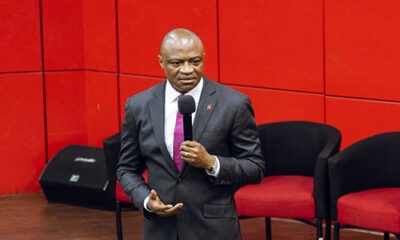
 Business2 days ago
Business2 days agoAgain, UBA Wins Africa’s Bank of the Year 2025
-

 News3 days ago
News3 days agoBREAKING: Federal Government Secures Release of 100 Abducted Schoolchildren in Niger State
-
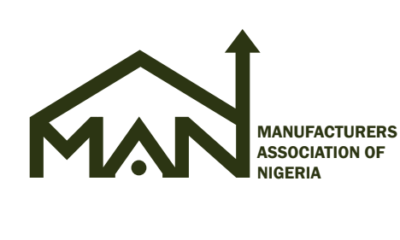
 Business2 days ago
Business2 days agoMAN Calls for FTZs Sanitizing, Following Smuggling Finds
-

 Politics1 day ago
Politics1 day agoBREAKING: Rivers Governor Siminalayi Fubara Defects from PDP to APC
-

 News1 day ago
News1 day agoBREAKING: Nigerian Senate Approves President Tinubu’s Request for Military Deployment to Benin Republic
-
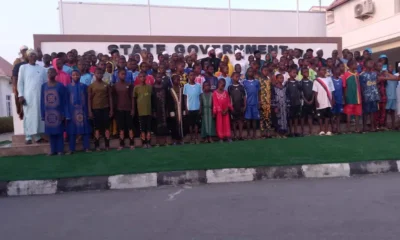
 News2 days ago
News2 days agoGovernor Bago Receives 100 Released Niger Students
-
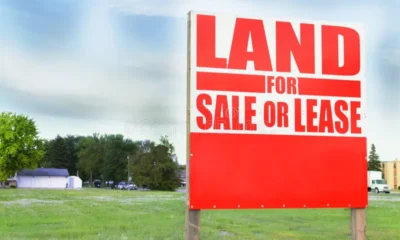
 Business2 days ago
Business2 days agoHow to Buy Land in Lagos While Living Abroad (Step-by-Step Guide) by Dennis Isong







